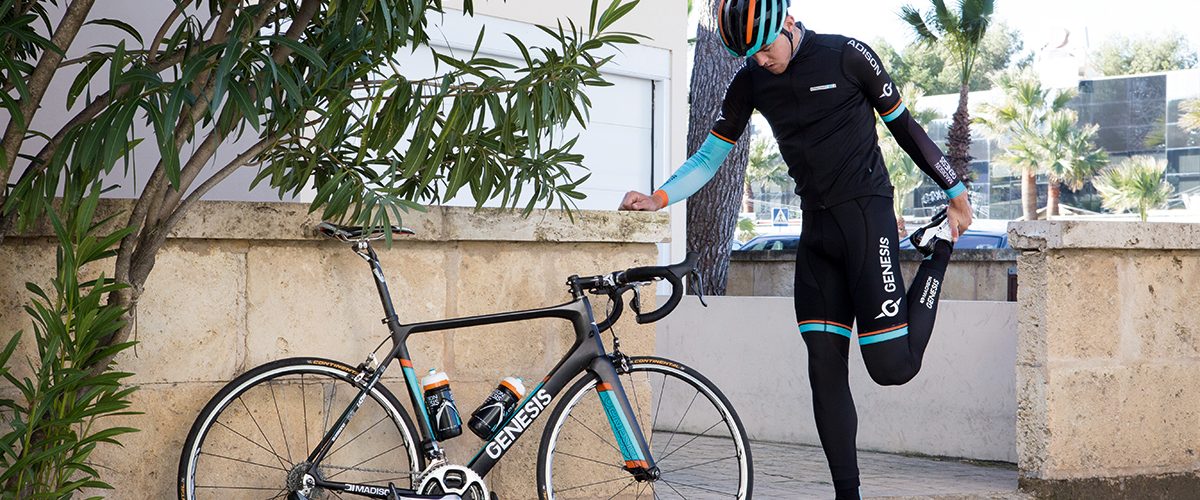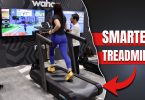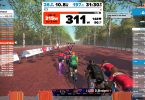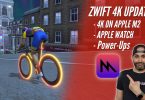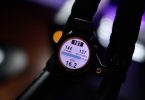Training is hard. Racing is hard. Whether it be a weight session or a 4-hour road race, your legs will certainly reflect the effort you put in your ride over the following 48 hours.
You literally tear your muscles apart (on a microscopic level)!
However, if you wish to see a continuous rise in power and fitness gains, you must recover. The quality, as well as quantity, of recovery time is crucial to developing your muscles and feeling a little less sore post-workout. Below are eight ways to recover properly.
1. Spin/cool/warm-down
Give yourself at least 5-10 minutes to properly wind down following a workout. A cool-down will help to remove waste products from your muscles (such as lactic acid) and flush in oxygen-rich blood to your worked muscles, aiding recovery.

Above: Chris Froome warms down from a stage of the 2017 Tour de France. Photo credit: Russ Ellis (http://www.russellis.co.uk/tour-de-france-2017/)
2. Have Recovery Rides
Having frequent periods of active recovery will likely improve your ability to sustain your level of training. As well as giving your body a break from the intense sessions, you will also give your mind a chance to relax from it all. Whether it be a ride out to a local café, or a group ride on Zwift, make sure to enjoy your easy rides!

Above: Team Dimension Data roll along the roads of Cape Town, preparing for their next season.
3. Use Recovery Supplements

Recovery supplements promote recovery and growth of muscle. Protein in particular, is a go-to after a session, as it helps to strengthen and build muscle. You will also need some carbohydrates to replenish your body’s glycogen stores.
I personally use SIS REGO Rapid Recovery post-exercise. Containing protein, carbohydrates, and electrolytes with vitamins and minerals, I will consume a serving within 20 minutes after finishing a session, to maximise absorption.
With the aid of recovery supplements, the rapid replenishment of your glycogen stores and the provision of protein will help you to get the most from your training and prepare you for your next session.
4. Stretch

Probably one of the most underrated forms of recovery, stretching shouldn’t be forgotten when it comes to recovery. As well as increasing your flexibility, which may see an increase in comfortability both on and off the bike, static stretching improves localised blood flow to your muscles, in a rebounding effect:
- Your blood flow is reduced during the stretch itself (due to vascular compression and lengthening)
- However, immediately after the stretch is released, blood flow increases significantly beyond its pre-stretching levels. It is likely that stretching aids recovery.
The optimal time to stretch is soon after you finish your ride; but maybe after a bit of food, a shower and a recovery drink.
5. Get a massage
Does a massage make you faster?
It doesn’t make you faster, but if it makes you feel better (by relieving muscle knots, for example), and allows you to train harder, then that makes you faster.
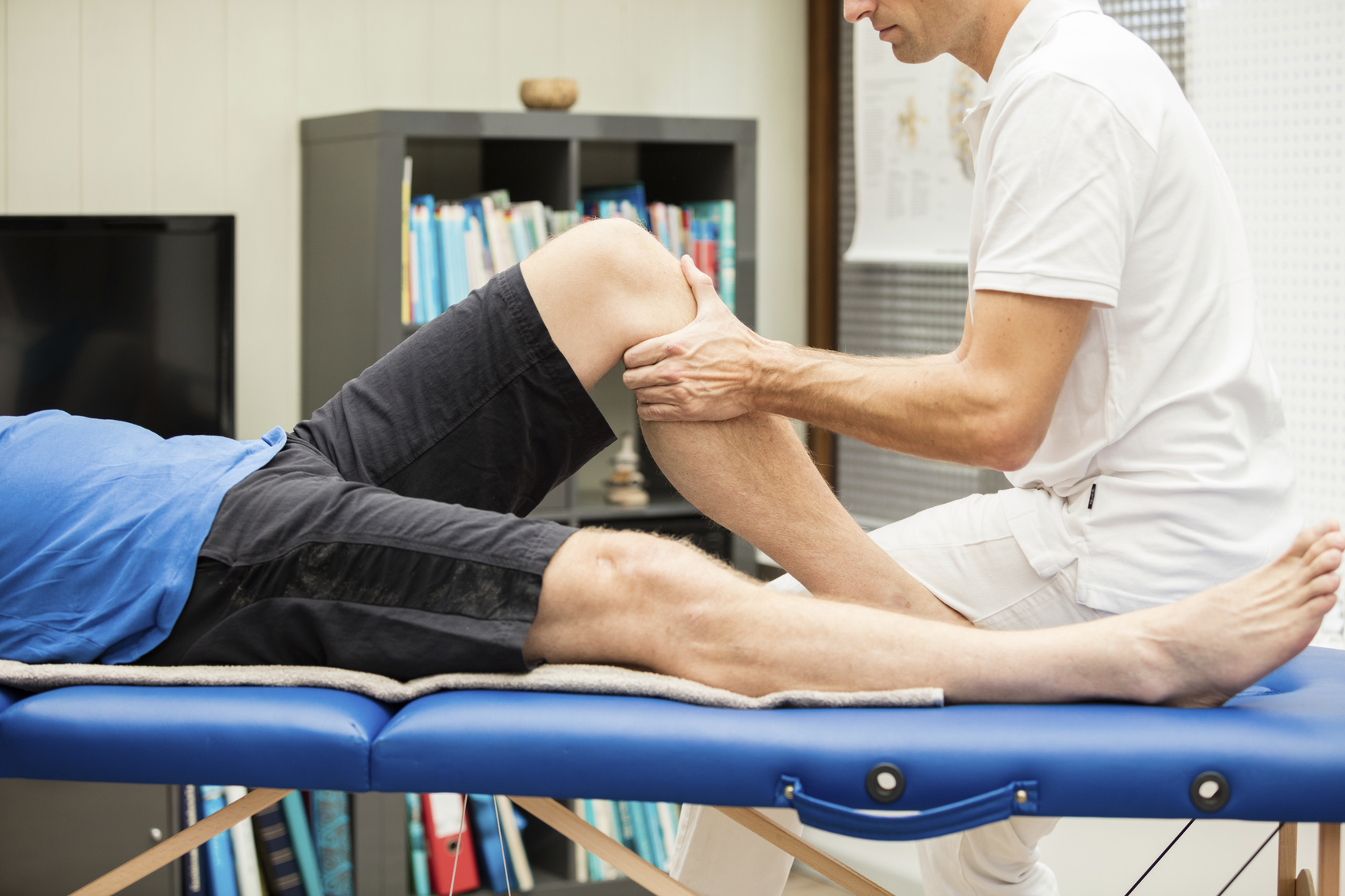
Massages can increase blood flow (like stretching), correctly align muscle fibres and reduce muscle tightness. A monthly, yet alone weekly massage is beyond most of our budgets, but why not consider one when you’ve had a few particularly hard weeks of training? Look for a qualified sports massage therapist if you do consider getting one. A good therapist, as well as treating problematic areas will also be able to flag any potential areas of concern and give you exercises or stretches to address them.
6. Get adequate sleep
Sleep occupies approximately a third of our lives, yet many of us give surprisingly little care and attention to it. This neglect is often a result of a major understanding. Sleep is not ‘lost time’ – Instead, it’s a critical function during which your body balances and regulates its vital systems, affecting respiration and regulating everything from circulation to growth and immune response.
Sleep is not to be undervalued; your recovery is accelerated during this phase of your daily life. Whilst asleep, your body releases approximately 80% of its total production of growth hormone, improving muscle recovery and generation.
Aim for 7-9 hours of sleep a night. If you can sleep more, do so.

Above: Team Omega Pharma Quick-Step have sleep nailed in their training plan.
7. Elevate your legs
With work and other social aspects of our daily lives dominating most of the time we spend awake, spending some time with your legs up in the air seems rare and pointless. However, spending some time elevating your legs after a hard ride can make a difference to recovery by promoting lower body blood flow and preventing ‘pooling’. Allowing more oxygen-rich blood to flow into your muscles after a workout may result in an improvement in recovery time.

Place your legs up against a wall and aim to stay there for five minutes for every hour ridden.
8. Compression
Does compression speed up recovery? There are arguments supporting this and against this. Nonetheless, there is nothing to lose by taking a measure to possibly speed up your recovery time.
Compression garments ‘can augment (increase) the movement of blood through muscles after exercising, when blood flow would otherwise slow. This increase in circulation may help flush away some of the biochemical byproducts of hard workouts, like lactate, reducing inflammation and muscle aches’, says Billy Sperlich, a professor of sports science at the University of Würzburg in Germany.
Compression boots like Normatec use compressed air to massage your limbs, mobilise fluid, and speed recovery.
Below – The Normatec Pulse Massage Pattern:

Similar to the kneading and stroking done during a massage, each segment of the attachment of the boot will first compress in a pulsing manner, and then release. This will repeat for each segment of the attachment as the compression pattern works its way up your limb.
9. Use an electro-stimulator
Electrical Muscle Stimulation (EMS) is used by some to promote recovery; the pros of EMS however are to be weighed by its cons. This unique method of recovery involves placing electrodes on the skin, where the muscle beneath contracts. A research carried out in the Journal study found that in comparison to passive recovery (nothing specific to recover except relaxing), electrical stimulation showed evidence of working better to lower blood lactate levels, a metabolic byproduct of exercise. However, electrical stimulation performed about as well as traditional recovery methods (like light active recovery or a massage) when it came to improving performance or clearing metabolic waste products.
With products ranging from £100 – £1,000, the decision to purchase an electro-stimulator should be made with some thought.

Above: Etixx Quick-Step (now Quick-Step Floors) use Compex electro stimulators to improve recovery.
Conclusion
To conclude from these points of recovery, let’s summarised what we’ve talked about:
- Spin/cool/warm-down
- Have recovery rides
- Use recovery supplements
- Stretch
- Get a massage
- Sleep
- Elevate your legs
- Compression
- Use an electro-stimulator
Thanks for reading!


